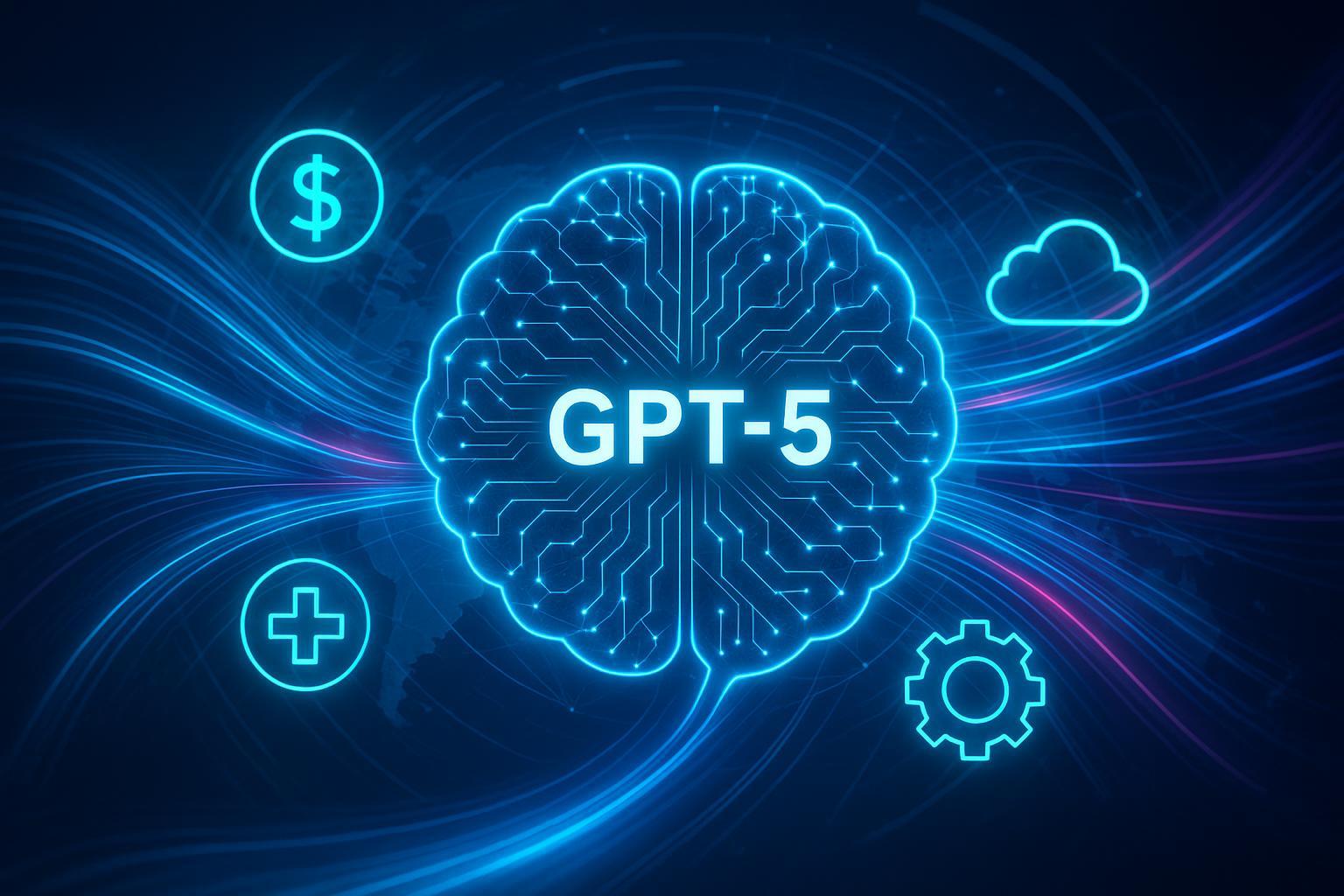
Published: August 7, 2025
Keywords: GPT-5, OpenAI, AI ecosystem, digital transformation, industry impact, technology trends
A Moment of Acceleration: GPT-5 Arrives Amid Unprecedented Anticipation
Just announced at OpenAI’s high-profile “LIVE5TREAM” event, GPT-5 is set to enter public and enterprise domains with effects that extend well beyond prior AI launches. The level of anticipation—reflected in multi-million user bases (ChatGPT: 700 million weekly users as of August 2025 VentureBeat) and wall-to-wall industry coverage (Reuters, The Verge)—underscores a pivotal truth: GPT-5 is not just another model upgrade, but a critical accelerant for global AI-driven evolution.
What’s different now? GPT-5 debuts not only with flagship domain reasoning and multimodal capacities but introduces three scalable variants (flagship, Mini, Nano), integrating open-weight releases for unprecedented accessibility (OpenAI Official Blog). With major partners (notably Microsoft) triggering immediate platform-wide integrations—such as “Smart Mode” in Copilot and Microsoft 365— the AI transformation of enterprise workflows is poised to reach new velocity.
Beyond Technical Specs: GPT-5 as an AI Ecosystem Shockwave
Mainstream coverage has efficiently summarized GPT-5’s technical advances and safety signals, but the deeper industry questions remain: How does GPT-5 trigger systemic transformation across businesses, global supply chains, and professional skill landscapes? What scenarios should technology leaders and policymakers truly prepare for?
1. The Productivity Engine—From Hype to Economic Reality
IT spending growth: Gartner projects global IT spending to rise 7.9% in 2025 to $5.43 trillion, with generative AI (led by launches like GPT-5) a primary driver (Gartner Press Release).
Market adoption: AI agents and generative models now top the innovation agenda across verticals. Microsoft Azure, supercharged by GPT deployments, reported annual revenue hitting $105 billion in 2025.
Productivity inflection: Analyst scenario models (MarketMinute, McKinsey) forecast that GPT-5 will catalyze a compounding productivity boost, first in digital media, financial services, and professional services, with knock-on effects in manufacturing and knowledge labor (MarketMinute).
“GPT-5 aims for seamless, domain-adaptable reasoning—merging speed, depth, and modality—enabling new forms of digital labor and knowledge work.”—Sam Altman, OpenAI (Tom’s Guide)
2. Value Chain Transformation—Breaking Bottlenecks and Democratizing Access
Unified architecture and variants: GPT-5’s core, Mini, and Nano versions unlock both light-weight edge computing and enterprise-scale customization—providing a breakthrough in deploying sophisticated AI across previously bottlenecked domains (OpenAI announcement).
Ecosystem effects: With open-weight models, developers and businesses now access “agentic” AI with flexible, multi-modal reasoning, fueling new applications for vertical software platforms, cloud infrastructure, and legacy system augmentation.
Downstream acceleration: Early scenario mapping suggests industries slow to integrate or adapt AI models at GPT-5 scale risk being leapfrogged, as more nimble competitors rapidly deploy workflow-embedded intelligence and autonomous agents.
3. Workforce Evolution—Emergent Roles, Urgent Skills
Labor market shifts: The World Economic Forum and LinkedIn data point to exponential demand for AI-fluent professionals and reskilled digital labor in roles ranging from prompt engineering to AI governance. In parallel, routine or repetitive white-collar jobs face intensified automation risk (WEF Future of Jobs Report).
Organizational imperatives: Executives and knowledge workers alike are encouraged to prioritize AI literacy, champion internal upskilling, and pilot new “agentic workflows” to avoid skills bottlenecks and remain competitive (MarketMinute, 2025).
4. Regulatory, Ethical, and Societal Scenarios—Navigating Uncertainty
Open-weight debate: While democratizing access, GPT-5’s more open-weight approach stirs concerns over potential misuse, regulatory adequacy, and the pace at which safety protocols can adapt (Reuters).
Governance frameworks: Policy debate is intensifying globally, with industry observers calling for a “shared stewardship” model—where AI advancement is matched by enforceable ethical standards, transparency, and multistakeholder oversight (Gartner).
Societal debate: Public sentiment is cautiously optimistic—excited by productivity potential, but increasingly focused on workforce changes and the challenge of keeping human values at the center of AI progress (X/Twitter, August 2025 trends).
Visualizing the Ripple Effect: Scenario Matrix (2025–2028)
Domain | Near-Term Impact (2025-26) | Longer-Term Implications (2027-28 & Beyond) |
|---|---|---|
Digital Media/Content | Automated research, content generation | New standards for trust, curation, and deepfakes |
Financial Services | Smart agents for analytics, compliance | AI-driven trading, robo-advisory, new regulatory frameworks |
Healthcare & Life Science | Enhanced diagnostics, knowledge retrieval | Personalized medicine, AI-powered R&D, intensive governance |
Enterprise Software/Cloud | Embedded AI in workflows, productivity leap | Industry platform convergence, service automation at scale |
Labor Market | Skills polarization, reskilling imperative | Emergence of new job families, adaptive education, displacement |
Policy & Governance | Early regulatory proposals, sandboxing | Binding global standards, ongoing debate on AI rights & liability |
Sources: Gartner Hype Cycle 2025, MarketMinute, WEF, WindowsForum, OpenAI Official
Critical Reflection: Toward an AI-Accelerated Future
The story of GPT-5 is not simply one of technical bravura or competitive leapfrogging. It is a landmark threshold for the digital economy, business models, labor adaptation, and the societal contract. Whether this catalyst produces more opportunity than turbulence will depend on how fast—and wisely—leaders, builders, and communities rise to the challenge of responsible, adaptive integration. The questions now extend beyond AI benchmarks to value chain design, workforce resilience, and the principle of shared stewardship.
Which sector will be transformed the fastest—and what does wise adaptation look like in your domain?
References & Further Reading:
This article is an independent industry analysis. No promotional or commercial content included. For critical thinkers, digital professionals, and tech leaders tracking the accelerating edge of AI.
